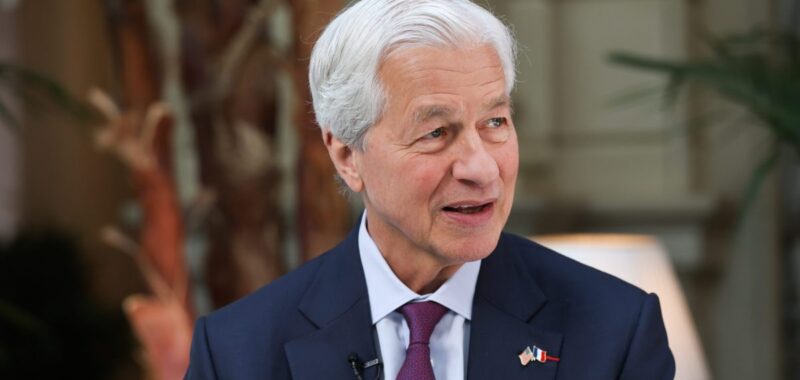
- JPMorgan CEO Jamie Dimon has enforced a return-to-office policy, requiring most employees to work in person five days a week. While Dimon emphasizes that the company, not individuals, will decide what’s best for business, research shows that such mandates have led to the loss of senior talent, and overall office occupancy across major U.S. cities remains just over 53%.
While JPMorgan’s return-to-office policy has ruffled feathers with some staff members, CEO Jamie Dimon has maintained that it is people’s right to work remotely if they wish—but he won’t be held accountable for letting it happen at America’s biggest bank.
The majority of JPMorgan’s staff have been asked to come back to the office five days a week, though 10% of the company’s more than 300,000 staffers worldwide work remotely.
Dimon, the Wall Street veteran who has led the bank for almost two decades, has said he’s got no problem with remote work as long as it makes sense for his business.
Previously 69-year-old Dimon has shared frustration with not being able to contact people as easily—especially on Fridays—because of remote work, and doubled down on the sentiment in a recent interview that not being in the office creates inefficiency.
“You have an awful lot of ‘We’ll pick it up again next week when we meet together’, which is very different to ‘Get back to me later today’,” Dimon told The Sunday Times.
“I’m not against people not wanting to [work in the office], but what they will not do is tell JPMorgan what to do,” he added.
Tensions between JPMorgan staff and management at the banking behemoth have been heightened over the employer’s RTO policy.
Like other Wall Street giants, JP staff have been asked to return in person for the full working week.
This has resulted in petitions being launched and Dimon being questioned on the policy in company meetings.
The man paid $39 million for his work in 2024 has been firm, reportedly telling a town hall: “I’ve been working seven days a goddamn week since COVID, and I come in, and—where is everybody else?”
Dimon has also been a staunch advocate for bringing people back to the office because younger staffers in particular can learn so much.
He told Bloomberg on Thursday that being in the office allowed younger staffers to pick up on the good habits of their seniors, adding: “You can’t learn working from your basement.”
Is the RTO debate over?
In the aftermath of the COVID pandemic, the return to office debate raged with businesses battling their staff over changing policy.
Wall Street, on average, has returned to in-person working while Silicon Valley tech giants have established more of a hybrid policy.
Meanwhile, other businesses have capitalized on the cost savings of ditching their offices and are making the most of the talent available by being able to hire from anywhere.
However, while the business case for the gamut of outcomes is clear, employees have argued that, on average, a hybrid schedule benefits their work-life balance.
Dimon has said he doesn’t disagree with this argument, in February saying: “I completely respect the people that don’t wanna go to the office all five days a week. That’s your right, it’s my right, as a citizen’s right, but they should respect that the company is going to decide what’s good for the client, the company, etc., not an individual.
“So they can get a job—and I’m not being mean—they can get a job elsewhere. I understand that; it may make total sense for them to do that. And I also respect the fact that other companies are going to try other ways to grow.”
Research has shown that some individuals have done exactly as Dimon suggested: Gone elsewhere for a role.
For example, a December working paper written by associate business professor Mark Ma and colleagues at the University of Pittsburgh analyzed the LinkedIn profiles of more than three million people employed across 54 financial and technology companies on the S&P 500 which had enacted RTO mandates between early 2020 and June 2023.
Ma’s findings were that the businesses that issued RTO mandates lost a significant number of senior and skilled employees.
And it seems businesses are finding a balance with the new reality.
Data from Kastle Systems, which tracks access swipes from more than 2,600 buildings across 138 cities, has found the average office occupancy for 10 major American cities is a little over 53%.
The Houston metropolitan area leads the way with an average occupancy of 62%, followed by Austin, Dallas, Chicago and New York.
This story was originally featured on Fortune.com
Source link

